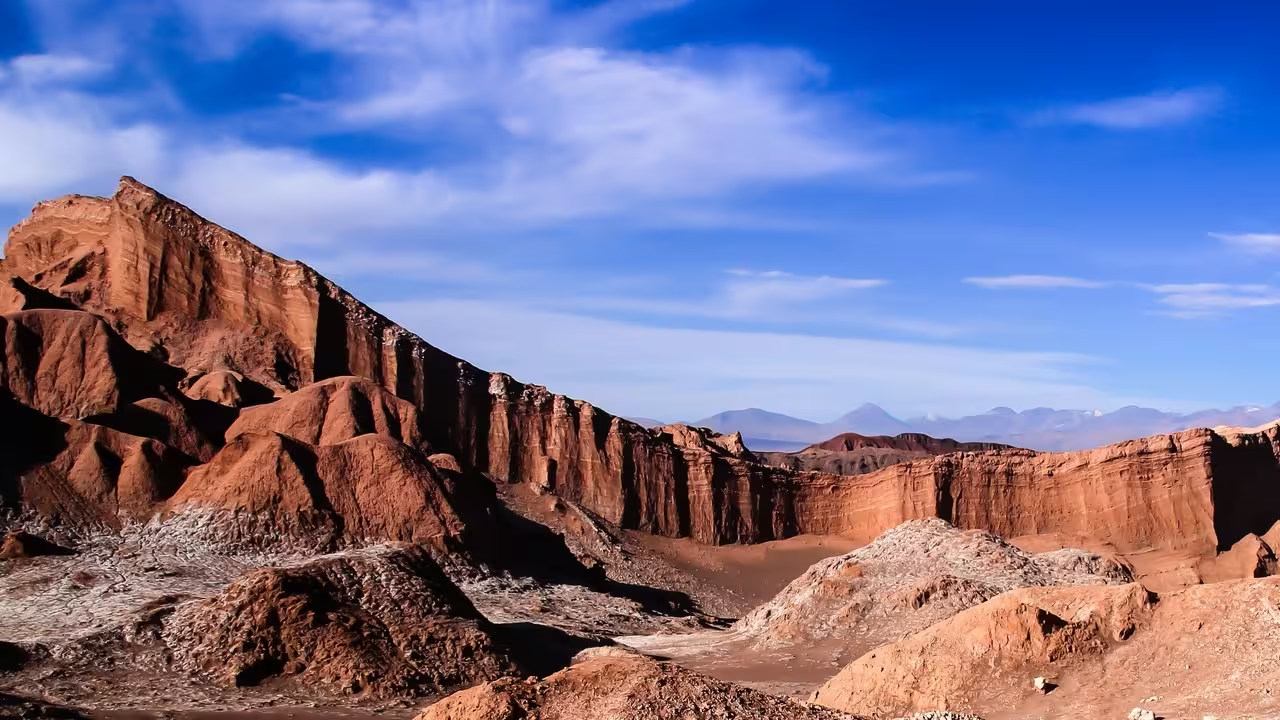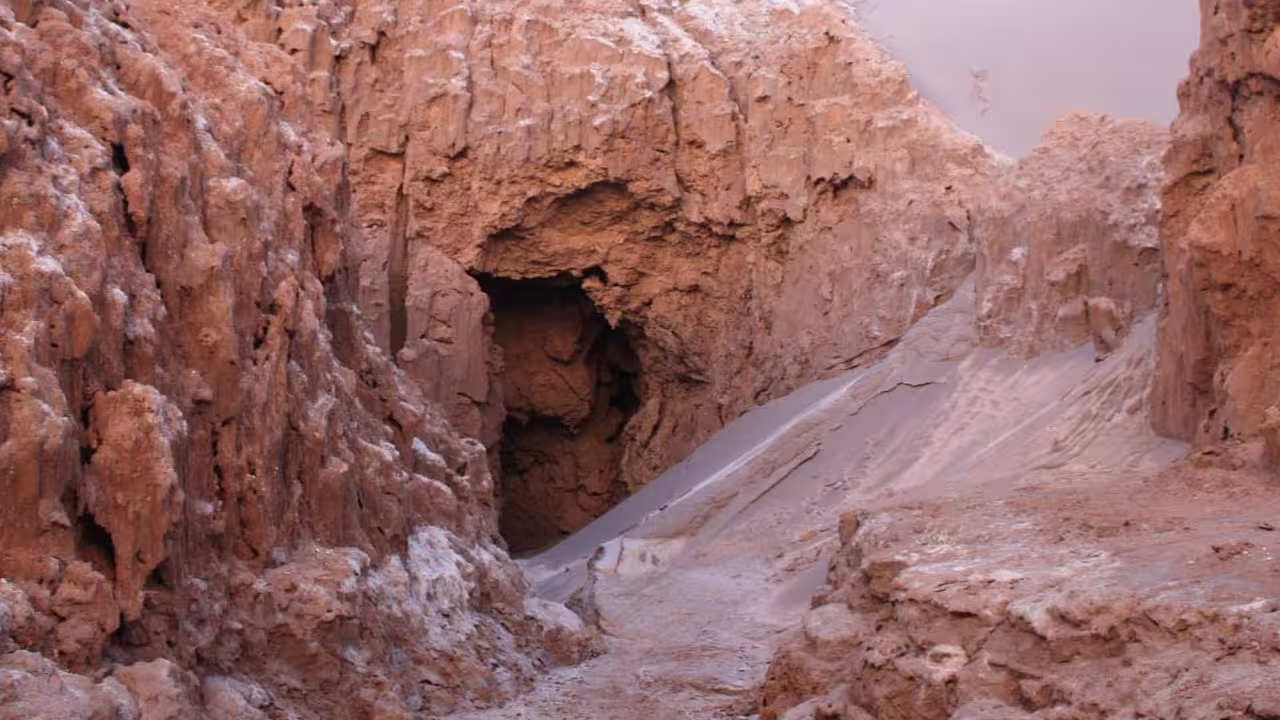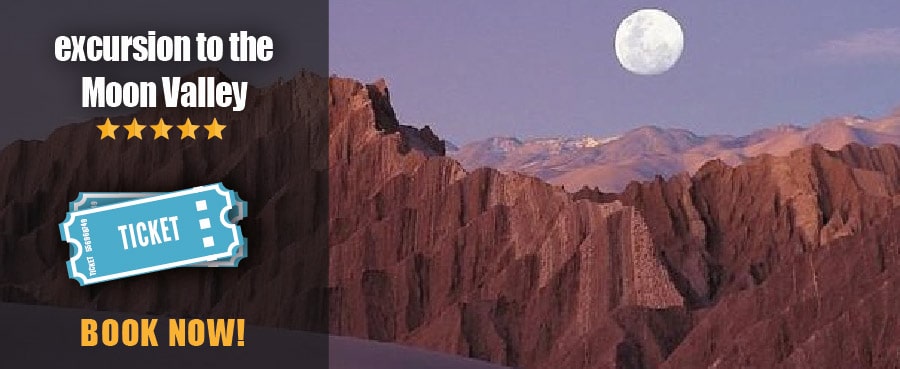The Moon Valley in Atacama Desert
The Moon Valley is one of the most visited places near San Pedro de Atacama. It’s located just 17 kilometers from the town center, in the Cordillera de la Sal.
This area is known for its stone and sand formations shaped by thousands of years of floods and wind. The result is a surreal landscape with colors and textures that look like the surface of the moon. A large sand dune offers stunning panoramic views of this otherworldly scenery.
The valley was formed where the Atacama Desert meets the Andes Mountains. The slopes and ridges here were created by boulders carried by mountain streams over time.
Why is it special?
The Moon Valley features:
-
Dry salt lakes, covered by a white, crusty surface
-
Multicolored escarpments in shades of green, blue, red, and yellow
-
Dramatic rock formations that change color throughout the day
-
A peaceful and magical atmosphere, especially at sunset and under full moonlight
Declared a natural sanctuary, the valley is one of Chile’s most famous landmarks, attracting hundreds of tourists every year.

Moon Valley and Death Valley
Together with the nearby Death Valley, Moon Valley forms part of the Cordillera de la Sal. It covers around 440 km², at 2,500 meters above sea level.
The area is bordered by:
-
The Domeyko Mountain Range to the west
-
The towns of Toconao and Peine to the east and south
The Moon Valley: Origins
Geological studies suggest that a large lake once existed between Toconao and Peine. It was fed by the Licancabur Volcano and dried up due to tectonic and volcanic activity.
This created the Cordillera de la Sal, made of layers of:
-
Siltstone
-
Gypsum
-
Salt
-
Clay
-
Sand
Over time, erosion shaped the valley into:
-
Pointed ridges
-
Hollows
-
Gray and ocher mounds
These features give it its iconic lunar appearance.
Natural Conditions
The valley has:
-
No vegetation or wildlife, except for a few lizards
-
Absolute silence
-
A dry, alien landscape full of sedimentary rocks and minerals
Weather in the Moon Valley, Atacama Desert
The climate here is high-altitude desert, with strong temperature changes.
-
Average maximum temperature: 24.5°C
-
Average minimum temperature: 17.1°C
-
Temperature swing: about 18°C between day and night
Travel tips:
-
Bring plenty of water and sunscreen
-
Dress in layers for heat during the day and cold at night
-
Take precautions if you are visiting with children
Altitude and Landscape
Moon Valley is at 2,550 meters above sea level. Its sharp ridges, hollows, and mounds were all shaped by wind erosion.
The valley is rich in:
-
Salt
-
Clay
-
Gypsum
One of the main highlights is the amphitheater, a 40-meter high formation of rock, salt, and sand.
Don’t miss:
-
Climbing the dunes
-
Walking across salt-covered trails
-
Watching the sunset and moonrise, a truly unforgettable experience
Location
Moon Valley is located near San Pedro de Atacama, in the Antofagasta Region of northern Chile. It’s about 13 kilometers from the Atacama Desert, the driest desert in the world.
This charming small town has around 5,000 inhabitants. Despite its size, it is well-equipped for tourism.
Note: Argentina also has a Moon Valley, located in the Ischigualasto Provincial Park, declared a UNESCO World Heritage Site in 2000.
The Moon Valley in Atacama Desert: location map

What to See in the Moon Valley
1. The Salt Cavern (Caverna de Sal)
-
First stop of the tour
-
Requires a flashlight and no claustrophobia
-
Features narrow ravines, tunnels, and steep trails
-
Not recommended for young children, pregnant women, or those with reduced mobility

2. The Main Dune (La Duna Mayor)
-
Most popular viewpoint
-
Takes 15–20 minutes to climb
-
Offers two trails:
-
One along a cliff
-
Another into a ravine with views of the Cordillera de la Sal
-
Best place to watch the sunset. As the sun sets, the rocks change color from red to purple to gray.
Pro tip: Arrive 45 minutes early for a good spot.
3. Mirador Achaches
-
Located across the ravine from Duna Mayor
-
Offers different views of the Cordillera
-
Less crowded
-
Harder to climb (about 25 minutes), but worth it
4. The Amphitheater
-
Cannot be accessed directly anymore
-
Can be viewed from nearby trails or lookouts
5. Salt Mining Remains
In the past, families extracted salt here. In the 20th century, this activity became significant for Chile’s mining industry.
You can still see:
-
Old machinery
-
Ruins
-
Marked paths showing former extraction sites
6. The Three Marias
-
Unique rock formations shaped by erosion
-
Also known as “the watchers”
-
Do not touch or climb them — one was damaged by a tourist
Summary
The Moon Valley is a place of astonishing beauty, shaped by nature and time. With its alien landscapes, salt caves, massive dunes, and unreal sunsets, it’s a must-see destination in northern Chile.
Book an excursion to enjoy the Moon Valley from San Pedro de Atacama
If you´re visiting the area of San Pedro de Atacama, you can book the excursion to the incredible Moon Valley in the Atacama Desert
Visiting Atacama? check our best tours to visit San Pedro de Atacama
#353 – Santiago, Atacama Desert & Easter Island – 9 nights 
#351 – Santiago, Torres del Paine and Atacama Desert – 9 nights 
#363 – Santiago, Atacama, Torres del Paine & Skorpios III Cruise – 12 nts 
#360 – Chilean Patagonia and Atacama Desert – 12 nts 
Atacama Tours with Argentina, Peru, and other destinations in Chile
A good idea is to combine San Pedro de Atacama with other destinations in Chile, Argentina or Peru. Check some great options below:
#1052 – From Rio to Santiago via Iguazu, Buenos Aires and Atacama – 18 nts 
#1081 – Colorful Argentina, Chile & Peru – 17 nights 
#1004 – Argentina & Chile in 12 nights – Option IV – 12 nts 
#1090 – The Great tour of South America – 26 nights 
More tours to visit Chile
Want to visit Chile? Check our complete list of tours.
For more information, just contact us at info@ripioturismo.com
Thank you!














